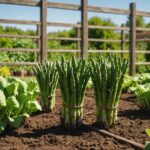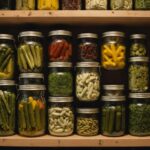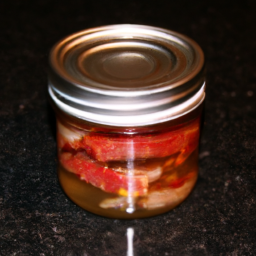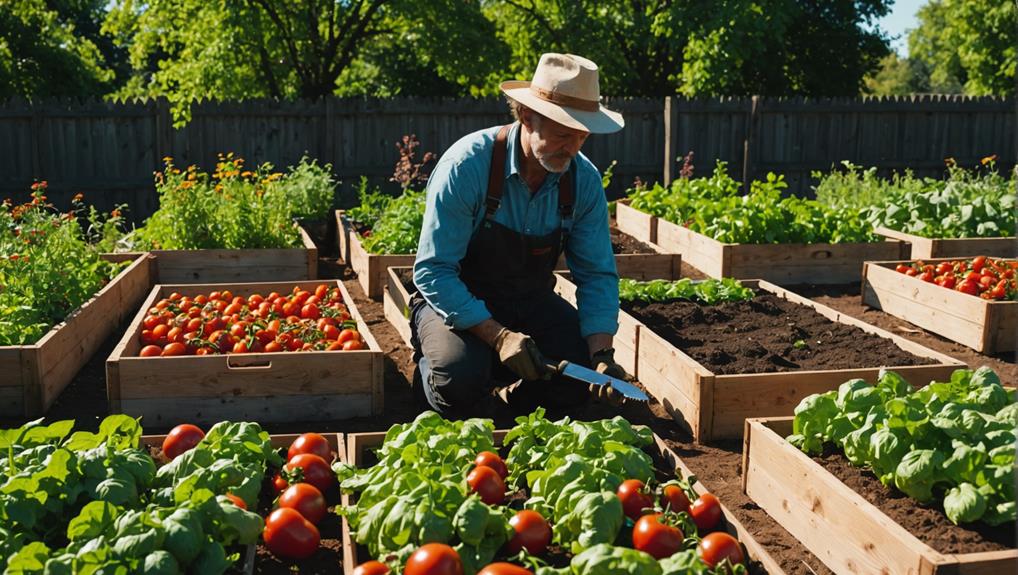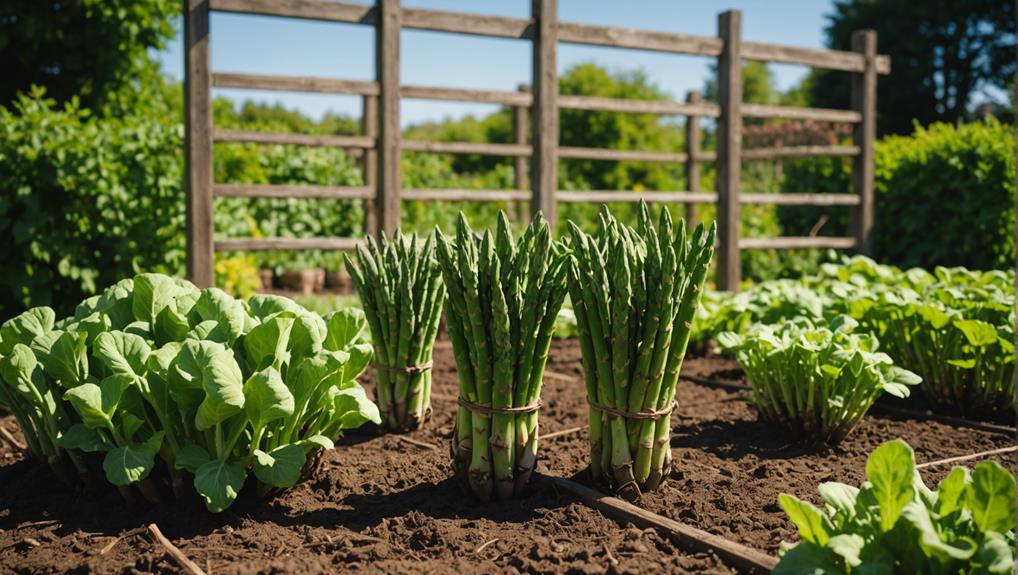As an Amazon Associate I earn from qualifying purchases.
Hey there! Ever wondered how you could preserve meat off the grid? If you’re someone who loves outdoor adventures or is preparing for a potential emergency situation, knowing how to preserve meat without electricity is a valuable skill. In our upcoming article, we’ll explore various methods and techniques that can help you keep your meat fresh for longer periods of time, even when you’re in a remote location without access to modern amenities. From smoking and drying to using natural preservatives, we’ve got you covered!
Interested in learning more? Stay tuned for our detailed article on preserving meat off the grid. We’ll delve into the reasons why knowing these methods can be beneficial, the different tools and equipment you may need, and step-by-step instructions for each preservation technique. By the end of it, you’ll have a solid understanding of how to ensure your meat stays safe to consume, no matter where you find yourself without electricity. So, whether you’re a seasoned survivalist or just curious about alternative methods of food preservation, this article is sure to provide you with valuable insights. Preserving meat off the grid is an essential skill for those who live in remote areas or are seeking self-sufficiency. Without access to modern conveniences such as refrigeration, it becomes necessary to explore alternative methods of preserving meat. In this article, we will discuss the various methods of off-grid meat preservation, including canning, smoking, salting, drying, and freezing. Each method has its advantages and challenges, but with proper knowledge and preparation, you can ensure the longevity and safety of your preserved meat.
Canning
Canning is a popular method for preserving meat off the grid. It involves packaging meat in jars or cans and heating them to destroy any harmful bacteria and ensure a long shelf life. Two main methods of canning are pressure canning and water bath canning.
Pressure Canning
Pressure canning is the preferred method for preserving meat due to its ability to reach high temperatures necessary for safe preservation. It involves placing meat and liquid (such as broth) into canning jars, sealing them with lids, and processing them in a pressure canner. The high temperature and pressure eliminate any bacteria or pathogens, ensuring that the meat remains safe to eat for an extended period.
Water Bath Canning
Water bath canning is a suitable method for preserving high-acid foods but is not recommended for meat. It involves submerging jars in boiling water for a specified amount of time to kill any bacteria and create a vacuum seal. However, it does not reach the high temperatures necessary to safely can meat.
Steps for Canning Meat
To can meat using the pressure canning method, follow these steps:
- Prepare your meat by cutting it into chunks or pieces that will fit into your canning jars.
- Precook the meat if desired, as it will shorten the processing time. However, raw meat can also be canned.
- Prepare your canning jars and lids by washing them thoroughly and ensuring they are in good condition.
- Fill your jars with meat, leaving an appropriate amount of headspace (usually 1 inch) to allow for expansion during processing.
- Add any desired seasonings or liquids to enhance flavor.
- Wipe the rims of the jars to remove any food debris and ensure a proper seal.
- Place the lids on the jars and tighten the bands finger-tight.
- Process the jars in a pressure canner according to the specific recommendations for your altitude and the type of meat being canned.
- Allow the jars to cool, and check for proper seals before storing them in a cool, dark place.
Smoking
Smoking is another effective method for off-grid meat preservation. It not only helps to preserve meat but also imparts a delicious smoky flavor. There are two main types of smoking: cold smoking and hot smoking.
Cold Smoking vs Hot Smoking
Cold smoking involves smoking meat at temperatures below 100°F (38°C) over an extended period, typically several days. It is primarily used for enhancing flavor rather than fully cooking the meat. Hot smoking, on the other hand, involves smoking meat at temperatures between 200°F (93°C) and 250°F (121°C) until it reaches a safe internal temperature.
Choosing the Right Wood for Smoking
The type of wood used for smoking can significantly impact the flavor of the meat. Different hardwoods, such as oak, hickory, mesquite, and applewood, produce distinct flavors. Experimenting with different wood types can help you discover your preferred flavor profile.
Smoking Process
To smoke meat, follow these general steps:
- Prepare the meat by trimming excess fat and seasoning it with desired spices or a marinade.
- Preheat your smoker to the desired temperature or build a fire using charcoal or wood.
- Place the meat on the smoking racks, leaving space between each piece for proper smoke circulation.
- Add wood chips or chunks to create smoke. Soak the wood in water beforehand for a more controlled and prolonged smoke.
- Monitor the internal temperature of the meat using a meat thermometer until it reaches the minimum safe temperature for consumption.
- Remove the meat from the smoker and let it rest before slicing or storing.
Storing Smoked Meat
Once smoked, the meat should be cooled and stored properly to maintain its flavor and safety. Smoked meat can be vacuum-sealed, wrapped tightly in plastic wrap, or placed in airtight containers. It should be stored in the refrigerator or freezer to keep it fresh for an extended period.
Salting
Salting is an age-old method of preserving meat by drawing out moisture and creating an inhospitable environment for bacteria to thrive. There are two main methods of salting: dry salting and wet brining.
Dry Salting
Dry salting involves rubbing salt directly onto the meat’s surface, allowing it to penetrate and draw out moisture. The salt acts as a natural preservative, inhibiting the growth of bacteria. It is essential to use the correct amount of salt for effective preservation and to prevent the meat from becoming overly salty.
Wet Brining
Wet brining involves soaking the meat in a solution of water, salt, and sometimes sugar and spices. This method not only draws out moisture but also infuses the meat with flavor. Wet brining is commonly used for poultry and pork, but it can be adapted for other types of meat as well.
Benefits and Process of Salting Meat
Salting meat offers several benefits, including improved flavor, extended shelf life, and ease of preparation. To salt meat, follow these steps:
- Choose your cut of meat and remove any excess fat or connective tissue.
- Prepare a salt mixture by combining salt with other desired spices or herbs.
- Rub the salt mixture evenly onto the meat’s surface, ensuring complete coverage.
- Place the salted meat in a shallow dish or on a rack and refrigerate.
- Let the meat sit for a specified amount of time, allowing the salt to penetrate and work its preservative magic.
- Rinse the meat thoroughly under cold water to remove excess salt.
- Pat the meat dry with paper towels and store it in a cool, dry place, or proceed with cooking or smoking it.
Drying
Drying is a traditional method of preserving meat that involves removing moisture from the meat to prevent bacterial growth. There are several ways to dry meat, including air drying, dehydrating, and making jerky.
Air Drying
Air drying involves hanging meat in a well-ventilated area with low humidity. This method relies on natural air circulation to dry the meat gradually. It is essential to consider temperature, humidity, and air quality when air drying meat.
Dehydrating
Dehydrating meat involves using a food dehydrator or an oven set at a low temperature to remove moisture. Dehydrating meat preserves its flavor and nutritional value while extending its shelf life. It is a popular method for making dried fruit, jerky, and other preserved foods.
Jerky Making
Jerky is a popular dried meat product that is easy to make and store. It involves marinating thin strips of meat in a flavorful sauce, then drying them slowly until they become chewy and fully dehydrated. Jerky is a convenient and portable snack that can provide a protein-rich boost during off-grid adventures.
Tips for Proper Drying
To ensure successful drying, follow these tips:
- Trim excess fat and connective tissue from the meat.
- Slice the meat into uniform pieces for even drying.
- Marinate the meat in a mixture of seasonings, spices, and a curing agent (such as pink curing salt) if desired.
- Use a food dehydrator or an oven set at a low temperature (around 140°F or 60°C) to remove moisture gradually.
- Rotate the drying racks or trays regularly to ensure even drying.
- Test the meat for dryness by bending it; it should crack but not snap.
- Store the dried meat in airtight containers or freezer bags in a cool, dry place.
Freezing
Freezing is perhaps the most familiar and convenient method of preserving meat. It requires access to a reliable power source for freezing and a freezer or icebox to maintain a constant low temperature.
Preparation for Freezing Meat
When preparing meat for freezing, it is crucial to follow proper procedures to maintain its quality. Some key steps include:
- Choose meat cuts that freeze well, such as roasts, steaks, or ground meat.
- Package the meat in airtight, moisture-proof packaging to prevent freezer burn.
- Remove as much air as possible from the packaging to minimize oxidative reactions.
- Label the packages with the date and type of meat for easy identification.
Packaging and Labeling
Proper packaging is critical for maintaining the quality of frozen meat. The most common methods include using vacuum-sealed bags, freezer-safe plastic bags, or airtight containers. Packages should be labeled with the date of freezing and the type of meat.
Freezing Tips and Tricks
To ensure the best quality when freezing meat, consider these tips:
- Freeze meat as quickly as possible after purchasing or processing.
- Freeze meat in portion-sized packages to allow for easy defrosting.
- Optimize your freezer’s temperature to maintain a constant freeze.
- Avoid overloading the freezer to maintain proper air circulation.
- Keep a record of the contents and dates of frozen meat for easy meal planning.
Factors to Consider
When preserving meat off the grid, certain factors should be considered to ensure safety and efficiency. These factors include the quality of meat, hygiene practices, temperature control, and equipment and supplies.
Quality of Meat
The quality of meat used for preservation is crucial. Always choose fresh, high-quality meat and consider the source and handling practices. Avoid using meat that is past its expiration date or shows signs of spoilage.
Hygiene Practices
Maintaining proper hygiene practices throughout the meat preservation process is essential to prevent contamination and ensure food safety. Wash hands thoroughly before handling meat, sanitize equipment and work surfaces, and follow recommended food safety guidelines.
Temperature Control
Temperature control is critical to ensure safe meat preservation. Certain methods, such as canning and smoking, require specific temperatures to destroy bacteria and pathogens effectively. It is essential to monitor and maintain the temperature throughout the preservation process.
Equipment and Supplies
Having the necessary equipment and supplies is crucial for successful meat preservation. This may include pressure canners, smokers, dehydrators, vacuum sealers, canning jars, and various utensils. Ensure all equipment is clean, in good working condition, and properly maintained.
Challenges Faced in Off Grid Meat Preservation
Preserving meat off the grid comes with unique challenges that must be overcome to ensure successful preservation.
Lack of Electricity
One of the most significant challenges in off-grid meat preservation is the lack of electricity. Many preservation methods, such as canning and freezing, rely on electrical appliances for temperature control. Implementing alternative energy sources, such as solar power or propane, can help address this challenge.
Limited Resources
Off-grid living often means having limited resources, such as water, fuel, and storage space. It is essential to plan accordingly and optimize the resources available to ensure efficient meat preservation. Conservation and proper allocation of resources are key.
Long-term Storage
Long-term storage is another challenge when preserving meat off the grid. Without access to a reliable power source, it may be challenging to maintain low temperatures required for safe long-term storage. Exploring alternative storage methods, such as root cellars or outdoor cold storage, can help address this challenge.
Benefits of Off Grid Meat Preservation
Preserving meat off the grid offers several advantages that go beyond simple preservation.
Self-sufficiency
Learning off-grid meat preservation techniques allows you to become self-reliant and less dependent on external food sources. It gives you the ability to provide for yourself and your family, even in remote or challenging circumstances.
Emergency Preparedness
Off-grid meat preservation is an essential skill for emergency preparedness. Natural disasters, power outages, or other unforeseen events can disrupt the food supply chain. Having the knowledge and ability to preserve meat off the grid ensures that you can have access to food during emergencies.
Cost Savings
Preserving meat off the grid can also result in significant cost savings. Buying meat in bulk or hunting and processing your own meat allows you to take advantage of lower prices. Additionally, preserving meat allows you to save money by taking advantage of seasonal sales or avoiding food waste.
Conclusion
Preserving meat off-grid is a valuable skill that promotes self-sufficiency, emergency preparedness, and cost savings. By utilizing different preservation methods such as canning, smoking, salting, drying, and freezing, you can prolong the shelf life of meat without relying on modern conveniences. Understanding the factors to consider and overcoming the challenges faced in off-grid meat preservation will enable you to enjoy the benefits of self-reliance and long-term meat preservation. Equip yourself with these skills, and you will be well-prepared for any off-grid situation that may arise.
As an Amazon Associate I earn from qualifying purchases.


